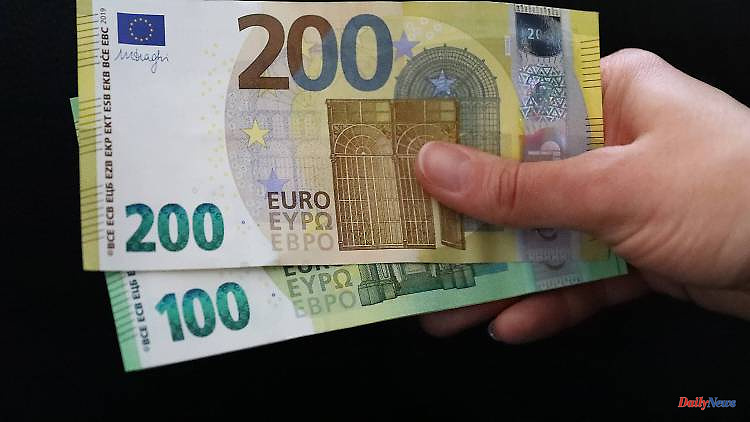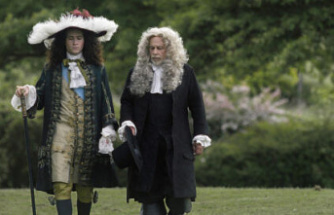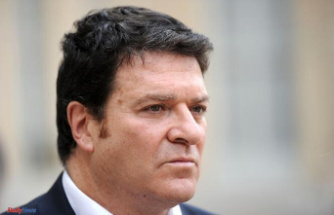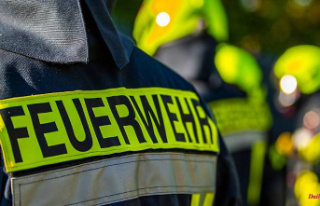The fact that the energy price flat rate was initially only intended for all employees subject to income tax caused excitement and anger among pensioners. But the federal government has heard the uproar and is now donating the 300 euros to retirees as well. Read here what you need to know about it.
With the 3rd relief package from the federal government, around 21 million pensioners are now also being paid the energy price flat rate (EPP) of 300 euros. After all, energy costs are rising rapidly for them too. Previously, the non-consideration of retirees in the windfall had caused a lot of unrest.
But before the money flows, there are still a few questions to be clarified.
When do retirees get the 300 euros?
According to the Federal Ministry of Finance (BMF) once on December 1, 2022.
Who pays the money?
The payment is made via the German pension insurance.
Is the EEP taxable?
Yes she is. Income tax must be paid on the energy price flat rate. The payment is presumably initially gross, like the actual pension and must then be settled with a possible tax return. The Federal Ministry of Labor (BMAS) has not yet been able to provide more detailed information on ntv.de. In any case, social security contributions do not apply.
Who has to file a tax return?
The declaration is due if the taxable income exceeds the annual basic allowance. In 2022, this will be EUR 9,984 for individuals and EUR 19,968 for married couples. Actually. Because as part of the many relief measures, this has increased retrospectively by 363 euros to 10,347 euros. However, it is not just the amount of the pension that matters, but also when someone retired. Pensions have only been partially taxed since 2005.
Up until 2005, half of the pensions received were still tax-free. By 2022, 82 percent of the retirement benefits will be taxable. Because every year the percentage of the taxable part of the pension for the respective new pensioners increases by two percentage points. If the pension begins in 2022, it is therefore 82 percent of the gross annual pension. After that, it only increases by one percentage point for new pensioners. All pensions beginning in 2040 or later will then be 100 percent taxable.
The background to the dynamic pension taxation is the conversion of taxation to a downstream system. This means that the contributions to the pension insurance can be deducted from tax during the working life and the pension must be taxed in the payment phase.
At the very least, an income tax return is due if the total amount of a pensioner's income exceeds the basic allowance valid for the corresponding year. This can also affect long-term existing pensioners. The good news is that the pension allowance will remain the same in subsequent years. For seniors who have been drawing a pension since 2005, 50 percent of the pension payment from 2005 will always remain tax-free in 2022. The exempt amount refers to the specific amount of money and not to a portion of the respective pension. Future pension increases must therefore be fully taxed.
But?
According to the coalition paper, the full taxation of pensions should actually be stretched from 2040 to 2060 and thus relaxed. This point may be found in one of the next (presumed) relief packages.
What is to be considered?
It should be noted that income does not only mean the statutory pension, but all income. So, among other things, rental income, payments from a company, Riester or private pension and investment income.
What can be deducted?
The amount of tax actually incurred depends not least on which expenses can be claimed for tax purposes from the tax office. Similar to working taxpayers, pensioners also have the opportunity to deduct various costs in their tax returns. These include, for example, health and nursing care insurance contributions, church tax, donations, contributions to insurance such as accident or liability insurance and health expenses.
The same applies to the costs that pensioners incur if they have the complex matter explained to them by an income tax assistance association or a tax consultant or if they want to have it checked whether there is a tax liability. Which is not a bad idea, because pensioners also have an obligation to bring the tax office. So you shouldn't wait for the authority to knock on your door. Otherwise, this form of retirement can also lead to additional payments and sanctions in the form of penalty interest.
What's left?
That cannot be answered in general. Depending on the amount of the pension, the tax deductions are individual. Basically, the lower the pension, the more effective the absolute relief for pensioners, as the Federal Ministry of Finance lets you know.
For comparison: According to calculations by the taxpayers' association, a married employee with a child, tax class 4 and an annual salary of 45,000 euros would receive a flat-rate energy price of 216.33 euros. With an annual salary of 15,000 euros, the same employee would receive 248.83 euros. If he is registered in tax class 3, he remains under the basic allowance, so he does not have to pay any taxes and is paid the full lump sum.
Less is left over for higher earners. According to the calculations of the association, a single person with tax class 1 and an annual salary of 72,000 euros will end up with a net subsidy of 181.80 euros. The top tax rate applies to him, and the flat rate also means that a solidarity surcharge applies again. A married employee with one child, tax class 4 and an annual salary of EUR 72,000 would receive a flat rate of EUR 184.34.
What if pensioners have already received the energy price flat rate by working?
According to the BMF, it is ensured that there are no double payments. So the package is only available once. According to the Federal Ministry of Labor and Social Affairs, the implementation of this decision remains to be seen.
Does the EPP have to be applied for?
no The energy price flat rate is paid out automatically.
Why did pensioners get nothing from the first EPP?
This was justified by the lavish increases in pensions on July 1 of this year.
What is the total relief?
The federal government speaks of a relief of around six billion euros gross.
Do retirees also get the EPP?
Yes, the federal government will also make a corresponding one-off payment for the approximately 1.5 million federal pension recipients. Implementation is the responsibility of the Federal Ministry of the Interior.
Is there criticism?
Naturally. For example, from the Taxpayers' Union. He fundamentally complains that there would only be real relief if the flat-rate energy price were tax-free.












